People used to raise their eyebrows when women wore bikinis in public—can you imagine? It was only about 80 years ago that French designer Louis Réard introduced the modern bikini, naming it after the site of nuclear tests because he thought the reaction would be explosive. Back then, even models hired to debut the bikini for Paris fashion week refused to wear it; Réard had to recruit a nude dancer. Flash-forward to now, and bikini models are not just showing off swimwear—they’re smashing old expectations and raising the flag for women’s empowerment worldwide.
Bikini Models as Modern Icons of Empowerment
Bikini models aren’t just walking hangers for swimwear. The top faces in this world, like Ashley Graham and Halima Aden, are rewriting what it means to look good in a bikini. Ashley made major headlines in 2016 as the first plus-size model to front the Sports Illustrated Swimsuit Issue—finally, millions of regular women saw someone with curves confidently wearing a bikini on supermarket shelves. Halima, meanwhile, became the first model to wear a hijab and burkini on the same magazine’s pages, breaking standards about both modesty and style. These stories say something crucial: empowerment isn’t one-size-fits-all.
One study by Harvard researchers in 2022 found that young women who regularly see models of diverse shapes and backgrounds tend to develop more positive body images and higher self-esteem. Big surprise, right? Real role models help real women feel seen. There’s a ripple effect—teen girls and even grown women scroll past curated Instagram shots and see confidence, not perfection, as the new currency for beauty. When brands like Aerie ban Photoshop on their swimwear ads, they don’t just sell more bikinis—they help buyers feel good about wearing them.
Bikini models are using their massive online platforms for real talk, too. Instagram is packed with posts about body positivity, mental health, and turning your so-called flaws into assets. You’ll spot hashtags like #LoveYourBody racking up millions of posts. All that visibility means the world to someone who doubts if she can ever pull off a two-piece.
Talk about a leap. Where bikini models once had to fit a super-narrow mold—think impossibly tall, thin, and bronzed—now they reflect a wild spectrum. Brands want everyone: short, tall, curvy, petite, dark-skinned, albinism, tattoos, even natural scars or rare birthmarks. Casting calls ask for authenticity, not just looks. In a 2024 interview, model and activist Connie Chiu—who has albinism and shot campaigns for dozens of swimwear labels—said:
“Every time I step onto set, I know I’m opening a door for someone else to follow. That’s far more rewarding than just posing for a picture.”
Empowerment is contagious. When bikini models own the spotlight, they give confidence to everyone watching, no matter what numbers show up on a scale.
Breaking Stereotypes and Challenging Beauty Standards
It’s no secret the fashion industry has had a reputation for being pretty exclusive. Runways and magazine covers were once reserved for one look—fair skin, straight hair, size zero. But bikini models have been at the sharp end of the pushback, chopping down stereotypes with each photoshoot. In fact, according to The Fashion Spot’s 2024 diversity report, almost 54% of swimwear campaigns last year featured non-white models; ten years ago, that number hovered around 10%. That’s a massive cultural shift in just a decade.
Social media hasn’t just changed the rules—it’s blown up the whole game. Influencers with zero agency backup now appear alongside supermodels in major swimwear launches. This new crowd is unfiltered, raw, and speaks straight to followers. For example, Nyma Tang, famous for her deep skin tone, has racked up millions of views reviewing bikinis and showing exactly how new designs look on a real body, not a photoshopped billboard. Authenticity wins followers and, by extension, shifts the market.
If you ever feel nervous about buying a bikini—or think certain cuts “aren’t for you”—remember this: every model started out with doubts. Now they speak openly about stretch marks, cellulite, and body changes across pregnancy or illness.
- Sports Illustrated’s Swimsuit Edition now features women aged from 18 to 75, shattering the “bikini is for the young” myth.
- Model and entrepreneur Melodie Monrose talks publicly about learning to accept her petite chest, saying it helped her land jobs for minimalist swim labels.
- The #BikiniLove Project in 2023 encouraged participants to post unedited bikini selfies and received over 500,000 submissions from women worldwide.
This flood of authenticity isn’t just for show. Retail data collected by retail analysts at Edited in 2024 showed sales of string bikinis, high-waist bottoms, and full-coverage tops all rising together. People are choosing what works for them—not just what’s trending. Here’s a quick look at how consumer preference has changed:
| Year | High-Waist Bikini Sales | String Bikini Sales | Full-Coverage Bikini Sales |
|---|---|---|---|
| 2015 | 23% | 63% | 14% |
| 2020 | 39% | 45% | 16% |
| 2024 | 52% | 33% | 22% |
This table tells the whole story: personal taste is overtaking fashion “rules.” That’s a win for everyone.
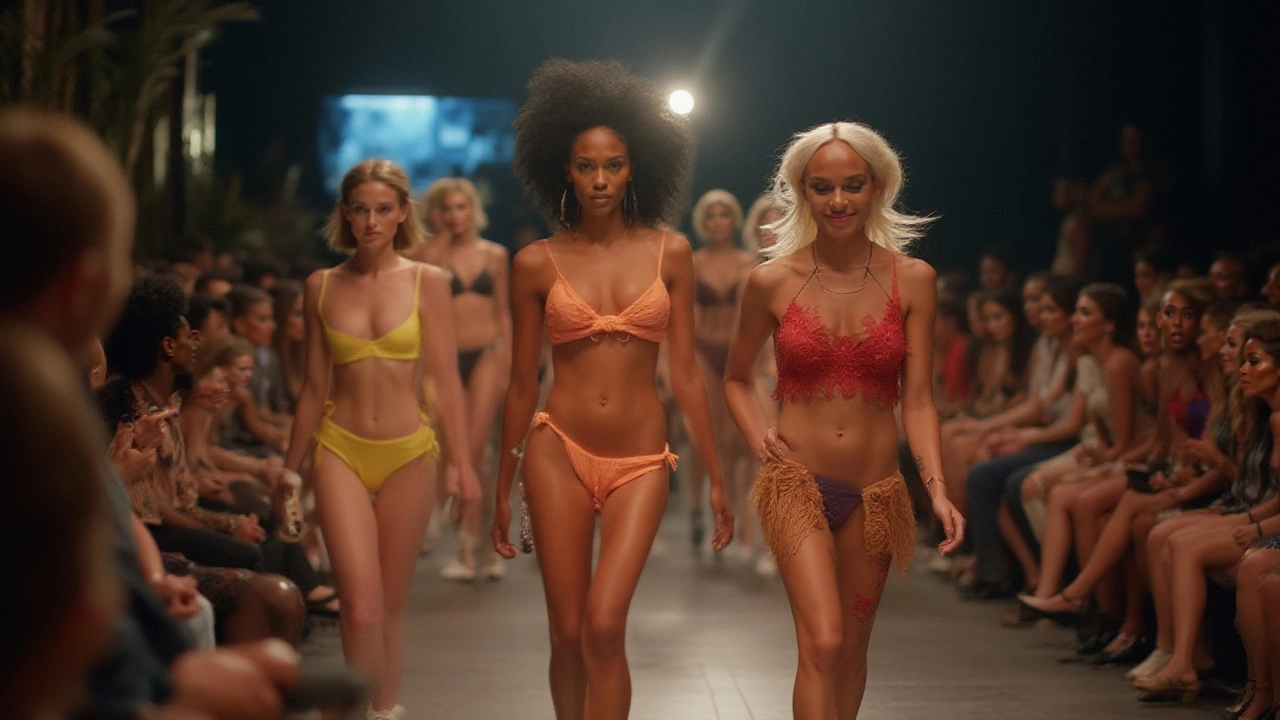
Tips From Bikini Models: Boosting Confidence and Style
Bikini models know better than anyone the weird mix of nerves and anticipation that comes with trying on a swimsuit in front of harsh mirrors and fluorescent lights. They’ve picked up tricks to flatten the nerves and boost the good vibes—and they’re way more down-to-earth than you might think.
Bikini models make this look easy, but here’s what they actually recommend:
- Find Your Fit—Not Anyone Else’s: Ignore the size on the label. Every brand uses different sizing. Bring two or three sizes into the fitting room and start with the one that feels comfortable, not tight. Comfort’s key to real confidence.
- Mix and Match: Just because the top and bottom come in a set doesn’t mean you have to wear them that way. Play around with combining styles—try a high-waist bottom with a triangle top for contrast. Models do this both at shoots and at the beach.
- Practice Your Pose: This isn’t about ‘sucking in’ or contorting; it’s about owning your body. Stand tall and shift your weight to one side, smile, and remember: no one’s looking harder at your tummy than you are.
- Look for Support: If you want a bit more support, look for underwired or molded cup tops, thicker straps, or swimwear designed for specific body shapes. Many top models insist on adjustable straps so they can get a just-right fit in seconds.
- Accessorize Smart: Sunglasses, a chic sarong, and a floppy hat aren’t just Instagram props—they’re instant confidence boosters that bring color and style to any look.
- Skincare Counts: Models swear by applying SPF 50 and a little shimmer lotion before stepping out. Healthy, glowing skin beats a tan any day, and prevents serious issues down the line.
- Don’t Skip the Self-Talk: You’re going to notice every line and bump. Bikini models confess they do, too. The trick is to tell yourself: “Nobody else is seeing what I see.” Shift that focus to what you love about your look.
- Swimsuit Try-On Parties: These are trending—invite a few friends and make an event out of picking new suits together. Having an honest hype team takes the pressure off.
- Follow Body-Positive Accounts: Give your feed a makeover; fill it with people who look like you, rocking their swimsuits. It helps, honestly.
Here’s a hands-on strategy bikini models use for a mood boost: the “Mirror Drill.” Before heading out, try on your suit, turn on your favorite song, and dance around the room. Psychologists say positive movement plus upbeat music hacks your brain into feeling more confident. Small thing, massive boost.
On the practical side, if you want your bikinis to last, models recommend rinsing with cool tap water after every wear (salt, chlorine, and sunscreen break down fibers fast). Never use a dryer—lay them flat to air dry instead.
Changing the Conversation: The Business and Culture of Bikini Modeling
Bikini modeling isn’t just poolside fun and staged photoshoots—there’s serious business and job opportunity behind the scenes. The global swimwear market is worth more than $24 billion as of 2025, and models are shaping its direction. Top agencies scout for talent from Instagram and TikTok as often as from in-person castings. The look isn’t everything—they want influencers who can motivate, inspire, and mobilize buyers.
Deals can be lucrative. For example, the average established bikini model with over 100K followers can earn anywhere from $3,000 to $10,000 per campaign, depending on talent and audience. New contracts increasingly require models to give input on product design; some even get a share of sales, not just a flat fee—brands want authenticity, and input from those who wear the product matters more than ever.
But there’s another side: more models are leading with advocacy, teaming up with NGOs to campaign for swim safety, ocean conservation, or body health. Bikini models’ photos pop up next to fundraisers for skin cancer research, or as faces for campaigns teaching water safety for kids. They’re lending their spotlight and earnings to far more than just sales.
In 2023, the “Bikini for Good” initiative raised over $2.5 million for girls’ education in developing countries. This effort was driven by the voices and visibility of swimwear models who shouted out causes close to their hearts. According to campaign lead Jasmine Tookes, “We aren’t just bodies in a bikini. We’re using this platform to fight for something bigger.”
The rise of sustainable, ethical swimwear is also changing the culture. More models partner with brands that use recycled fabrics, avoid toxic dyes, or guarantee fair wages for factory workers. Model-turned-designer Candice Swanepoel has spoken publicly about her commitment to eco-friendly production, saying in a recent fashion panel,
“We owe it to future generations—feeling good in a bikini shouldn’t come at the planet’s expense.”
So yeah, bikini models are still about summer vibes and swimsuit snaps. But real empowerment means owning all sides—confidence, advocacy, personal taste, and responsibility. Women everywhere are catching on. The bikini isn’t just a style; it’s a movement, and it’s only just getting started.
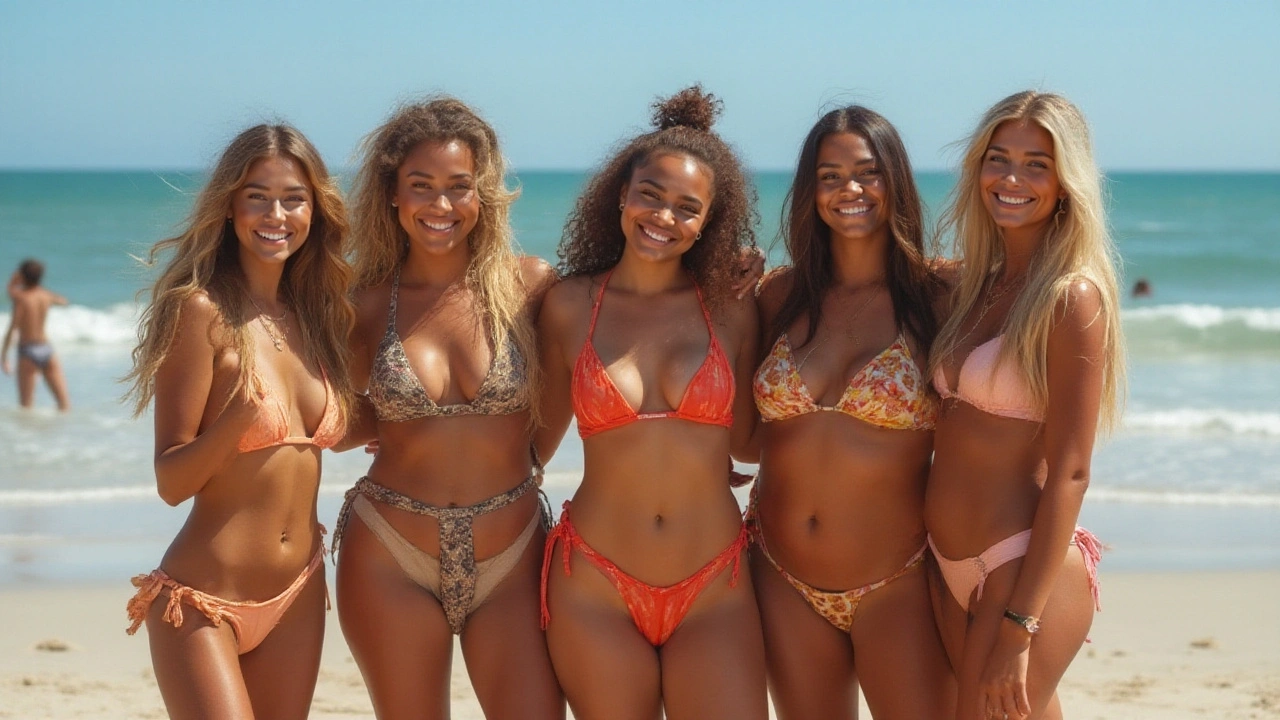
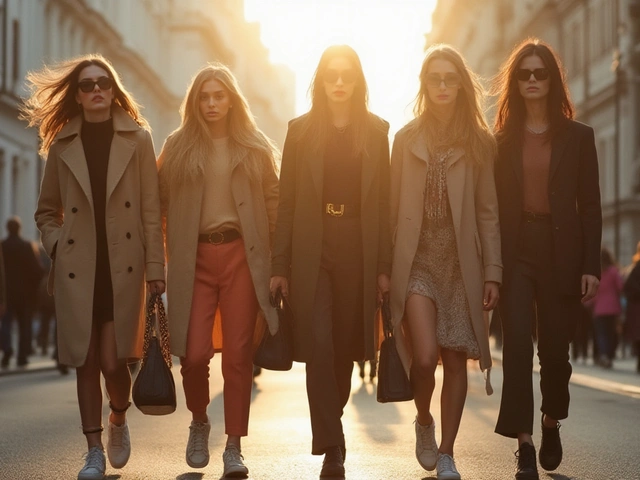


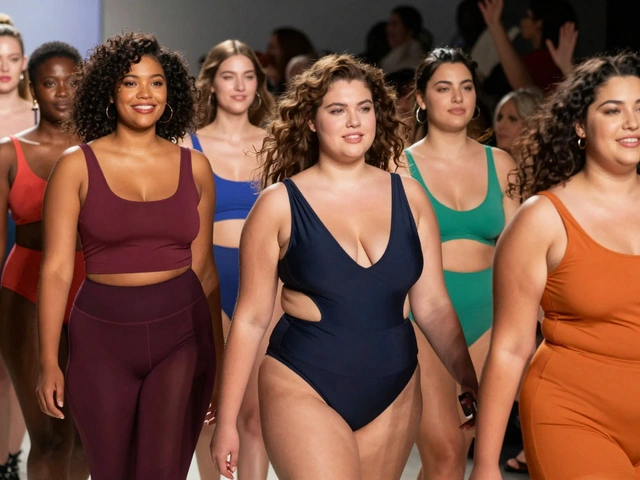

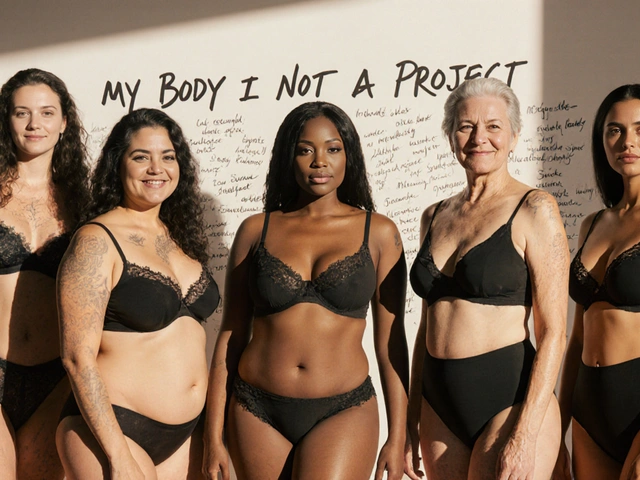
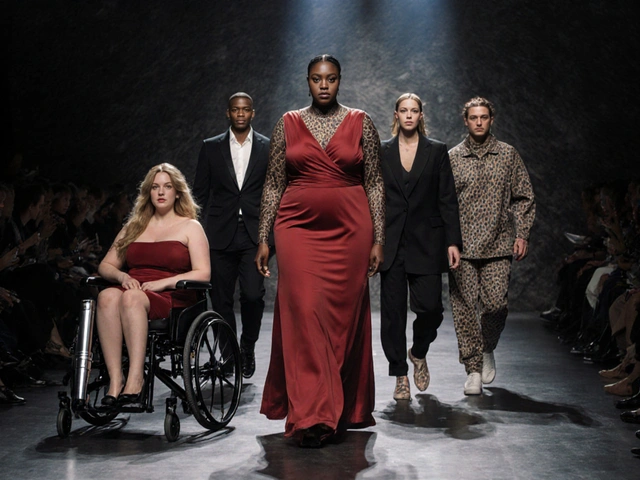
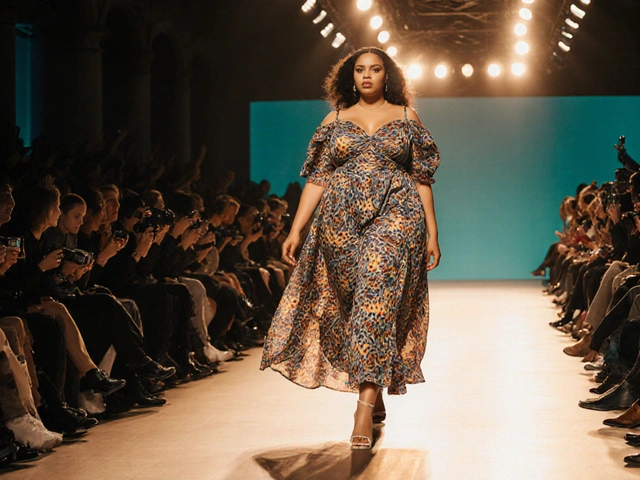
August 5, 2025 AT 11:23
Dale Loflin
You know, from a philosophical standpoint, what bikini models are doing here is more than just fashion evolution; it's a subversion of deeply embedded societal paradigms. The mere act of embracing swimwear as empowerment disrupts the normative gaze that often subjects women's bodies to objectification. This interplay between freedom and representation creates a lattice of meaning that challenges hegemonic discourse.
It's fascinating how choice of attire becomes a battleground for identity politics, intersecting with notions of autonomy and gender performativity. So, when we talk about bikini models leading this charge, we're witnessing a dialectic of resistance and acceptance coalescing into modern cultural praxis. Honestly, the implications ripple well beyond beachwear.
I'd love to unpack what this means for the future of fashion philosophy and how it can scaffold women's agency in other spheres too.
August 6, 2025 AT 07:11
Chancye Hunter
Omg this post is soooo inspiring! 👙💖 I absolutely love how bikini models are not just about looking good but actually breaking old-school stereotypes. It’s like they’re sending a powerful message that women can feel confident and strong in whatever they choose to wear, and swimwear is totally part of that.
And the expert tips? Super helpful! I’m definitely going to try some of them next time I go shopping for a swimsuit. It’s awesome that this isn’t just about fashion but about women’s empowerment and feeling great in our own skin.
Huge props to all the models out there leading this change! Keep shining and inspiring! 🌟✨
August 8, 2025 AT 08:23
Toni Plourde
From a professional perspective, the evolution of swimwear fashion spearheaded by bikini models truly exemplifies a remarkable shift towards inclusivity and empowerment. By challenging outdated stereotypes surrounding women's bodies, these models help promote a more diverse understanding of beauty standards.
Additionally, the integration of expert advice within this movement encourages women to make informed choices that align with their comfort and confidence levels. This fusion of fashion innovation and empowerment presents a unique opportunity to redefine societal narratives around body image, highlighting that swimwear can be a medium of strength rather than vulnerability.
It's encouraging to witness industry professionals collaborate with advocates to sustain this momentum, nurturing an environment where women feel represented and respected.
August 10, 2025 AT 12:33
Neha Sharma
Honestly, there’s no sugarcoating this — it’s about time swimwear fashion stopped being about shaming women or pressuring them to fit some unrealistic mold. Bikini models putting themselves forward like this? It’s more than fashion, it’s a statement of rebellion against that kind of oppressive thinking.
Women deserve to feel powerful and comfortable without being boxed into outdated ideas about modesty or beauty. And those inspiring stories, wow, some of them are downright bold and fearless. This isn’t just a trend, it’s a movement that’s shaking up how we see women’s autonomy.
We need to stop policing bodies and start celebrating choices. Period.
August 12, 2025 AT 23:18
g saravanan
The transformative journey of bikini models in reshaping swimwear fashion can be seen as a beacon of collective empowerment that transcends mere aesthetics. It serves as a vital catalyst for engaging broader philosophical dialogues about identity, freedom, and cultural expression in contemporary society.
Fashion, in this context, acts as a vibrant canvas illustrating the harmonious fusion of tradition and modernity—where empowerment becomes an intrinsic motif. Such narratives invite us to rethink the dialectic of vulnerability and strength in the female experience, challenging entrenched paradigms and nurturing inclusivity.
This evolving paradigm offers us profound insights on how clothing functions as a language of resistance and affirmation within swirling societal currents.
August 16, 2025 AT 08:15
Ajay Kumar
I appreciate how swimwear is now seen as more than just apparel but a form of self-expression and empowerment, as the article highlights. It’s important for women to have access to swimwear options that not only reflect their style but also boost their confidence irrespective of body type or personal background.
The reference to expert tips is especially useful for those unsure about finding the right swimwear fit or style, which is often an overlooked aspect. This approach helps normalize confidence in all shapes and sizes, countering the often narrow beauty narratives handed down through mainstream media.
I hope we continue seeing more brands and communities embracing this encouraging trend with genuine inclusion and support.
August 19, 2025 AT 03:43
Nancy Espinoza
Seriously, the way bikini models are pushing boundaries right now is like this epic act of rebellion and self-love all rolled into one. They’re flipping the script on what it means to wear something so revealing and owning it unapologetically.
It’s not just swimwear; it’s wrought with meaning—power, freedom, confidence, and sometimes even vulnerability turned into strength. Can’t help but admire the sheer audacity and beauty of it all. There’s something truly magnetic about seeing women rewrite societal rules with each new style and story shared.
This whole vibe is electrifying, and I’m here for it.
August 23, 2025 AT 16:26
Mike Healy
Honestly, it makes me wonder if this empowerment angle is fully genuine or partly a media-driven construct designed to sell more bikinis. Behind it all, there might be hidden attempts at manipulating societal norms to sustain consumerism, disguised as liberation.
While bikini models do represent change, one must also question the deeper narratives at play and remain skeptical of how much agency they actually hold versus how much is decided by big fashion corporations. Critical thinking matters here.
Still, interesting topic worth exploring further with eyes wide open about potential agendas.
August 24, 2025 AT 17:43
Jenna Carlson
Look, I get that some folks wanna frame bikinis as some big feminist statement but really? Most of this is just fluff to push flashy western values and undermine traditional family morals. You can dress liberally without calling it women empowerment.
I mean, if we’re honest, a lot of these ‘inspirational stories’ are just marketing stunts for brand sales. This bikini obsession is overrated and doesn’t fix genuine societal issues. Not everything needs to be a political statement, some things are just what they are.
We need to keep our culture grounded and not get swept up by every trending hype tagged as empowerment.
August 31, 2025 AT 13:33
Abhinav Singh
This piece fundamentally resonates with the ongoing discourse around cultural metamorphosis and the liberation ethos found within modern swimwear fashion. The role of bikini models transcends passive exhibitionism and emphasizes proactive agency in self-definition.
Their strides provide not only stylistic innovation but also a symbolic reclaiming of narrative space, thereby fostering collective self-esteem among women globally. It is essential to embrace the nuanced spectrum of empowerment expressed through such fashion evolution, as it reflects the pluralistic nature of contemporary identity construction.
Ultimately, fashion's power lies in its capacity to morph from constraint to catalyst, and bikini models at the forefront epitomize this transformative potential.